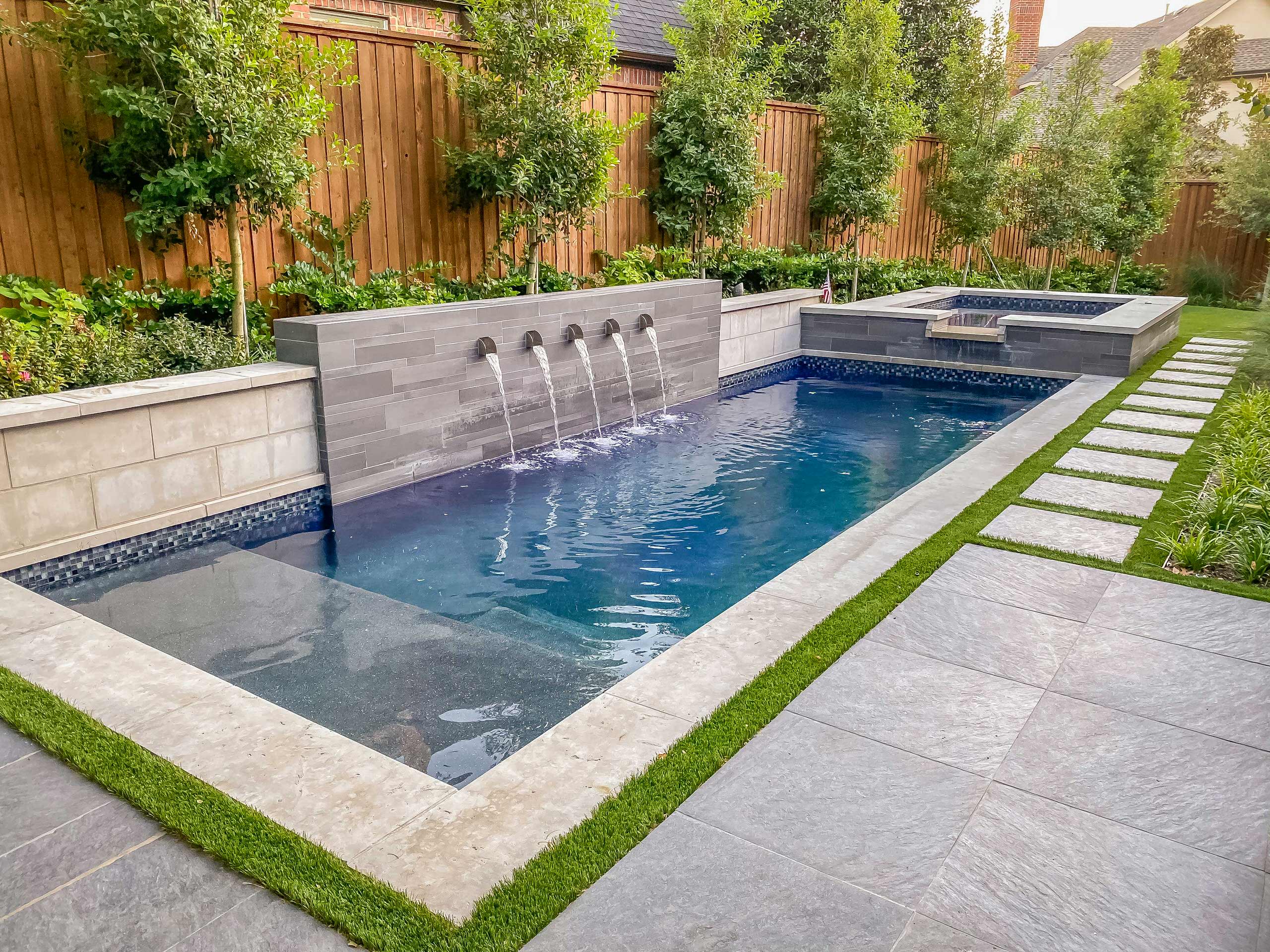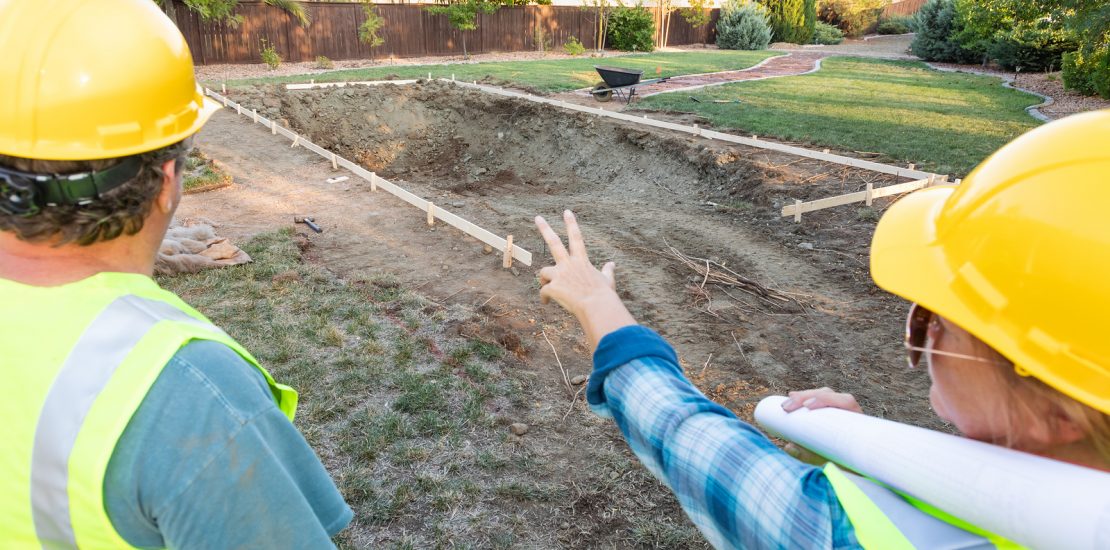Building a pool is a significant investment. It requires careful planning and management to ensure a successful outcome.
Managing pool design and construction can be a complex process. It involves numerous steps, from initial design to final construction.
This guide aims to simplify this process. It provides a comprehensive overview of managing pool design and construction.
We’ll delve into the role of a professional pool designer. We’ll also discuss the importance of understanding zoning laws and regulations.
We’ll explore the benefits of hiring a construction manager. We’ll also provide insights into selecting materials and incorporating energy-efficient features.
By the end of this guide, you’ll have a clearer understanding of the process. You’ll be better equipped to manage your pool design and construction project.
Understanding the Basics of Pool Design and Construction
Creating a pool begins with a clear vision. Understanding how a pool fits into your home’s design is essential.
A well-designed pool serves both aesthetic and functional purposes. It enhances your home’s beauty and provides a relaxing retreat.
The pool construction process involves several key steps. These begin with design and move through to final inspection.
Here’s a brief rundown of the key stages involved:
- Initial concept and planning
- Engaging with professional designers
- Understanding zoning laws
- Selecting materials and energy features
- Overseeing construction phases
- Conducting final inspections
Each stage demands attention to detail. Missing a step can lead to costly delays or regulatory issues.
It’s important to work with skilled professionals. Their expertise ensures that each phase is completed correctly.
Having a firm grasp of the basics helps you make informed decisions. This understanding lays the foundation for a successful pool project.
The Role of a Professional Pool Designer
A professional pool designer is indispensable. They bring your vision to life with precise plans and innovative ideas.
Their expertise ensures that the design aligns with your home’s aesthetics. They balance creativity with practicality.
Designers also anticipate future needs. They incorporate features that enhance usability and safety, creating a lasting oasis.
Navigating Zoning Laws and Regulations
Understanding zoning laws is crucial. Local regulations dictate the pool’s size, location, and safety standards.
Non-compliance can lead to fines or reconstruction. Therefore, it’s vital to research these requirements early on.
Professional guidance can simplify this process. Experts ensure your pool meets all legal requirements, avoiding future complications.
The Importance of Construction Management in Pool Projects
Effective construction management is vital for a successful pool project. It ensures everything runs smoothly and on time.
A skilled construction manager coordinates each phase. Their oversight reduces the risk of errors and delays.
They also handle communications between all parties involved. This ensures everyone is on the same page throughout.
Budget management is another crucial aspect. A construction manager helps track expenses, preventing cost overruns.
Ultimately, having a competent manager streamlines the process. It brings peace of mind and a higher quality end result.
Hiring a Construction Manager: Pros and Cons
Hiring a construction manager offers many advantages. Their expertise often leads to a smoother project flow.
Pros include improved scheduling and cost management. They reduce stress by overseeing complex tasks.
However, there are some cons to consider. The primary concern is the additional cost involved.
The added expense must be weighed against potential benefits. Evaluating your project’s complexity helps determine if a manager is necessary.
Steps in the Pool Construction Management Process
The pool construction management process is structured and systematic. Each step builds upon the last for seamless execution.
First, a comprehensive project plan is developed. This guides every phase from start to finish.
Next is permit acquisition. Permits ensure compliance with local laws and codes.
Site preparation follows. This includes soil analysis and leveling.
Construction begins after the site is ready. Regular inspections maintain quality and adherence to plans.
Here’s a simplified list of these key steps:
- Develop project plan
- Acquire necessary permits
- Prepare site
- Begin construction
- Conduct regular inspections
Each stage requires precise management and coordination. By following this process, you minimize risks and optimize outcomes.
Selecting Materials and Incorporating Energy Efficiency
Choosing the right materials for your pool is crucial. Durability and aesthetics should guide your decision-making process.
Opt for materials that withstand weather variations. They should also require minimal maintenance over time.
Incorporating energy-efficient materials can substantially reduce long-term costs. These choices benefit both your wallet and the environment.
Prioritize energy-efficient designs from the start. For instance, consider lighter pool finishes that reflect sunlight.
Efficient lighting options also enhance energy savings. LED lights, for example, consume less power compared to traditional lighting.
Thoughtful selection of materials and design elements promotes sustainability. It also enhances the overall appeal and functionality of your pool.
Energy-Efficient Features for Your Pool
Integrating energy-efficient features into your pool design offers many benefits. These components help lower energy usage without sacrificing comfort.
Solar heating systems are an excellent choice. They harness the sun’s power, reducing the dependency on electric heaters.
Variable speed pumps are another smart option. They adjust their operation to meet current needs, optimizing energy use.
Automated systems can manage pool functions efficiently. They help in regulating water temperature and filtration schedules.
Covering your pool with a quality cover minimizes heat loss. It also reduces water evaporation, further conserving resources.
Each feature contributes to a more sustainable pool environment. This approach ensures you enjoy a refreshing dip while maintaining eco-friendly practices.
Budgeting and Cost Management for Your Pool Project
A clear budget ensures a smoother pool construction process. It helps manage expenses and avoid unexpected financial strain.
Start by outlining all potential costs. Include design fees, materials, labor, permits, and additional features.
A detailed budget allows for better cost control. Allocate funds for each phase and factor in a contingency for surprises.
Monitoring expenditures throughout the project is crucial. Regular budget reviews help maintain financial health and project progress.
Communicate openly with your contractor about financial limits. This transparency aids in aligning design expectations with budget constraints.
With disciplined budgeting, you can achieve your dream pool without overspending. Proactive financial planning leads to a successful project.
Understanding the Costs: From Design to Completion
Initial pool design costs cover consultations and blueprints. Engaging a skilled designer is a wise investment for a functional outcome.
Construction costs vary based on the pool size and complexity. Excavation, plumbing, and structural components contribute to the total.
Account for post-construction expenses like landscaping and utility connections. These additional costs enhance the pool area and usability.
Remember, ongoing maintenance will also impact your budget. Planning for these future expenses is essential for long-term enjoyment.
Don’t overlook the cost of any required permits or inspections. Securing proper documentation ensures legality and safety.
Understanding all associated costs prevents surprises. Knowledge of financial commitments supports informed decision-making throughout your project.
Communication and Timeline Management During Construction
Effective communication is crucial during pool construction. Regular updates from your construction manager keep you informed. This transparency helps address issues promptly.
Establish a clear timeline at the project’s onset. Outline key milestones and expected completion dates. Keeping track ensures accountability and project pacing.
Flexibility is important in construction. Sometimes timelines shift due to unforeseen circumstances. Open dialogue with your team helps navigate these changes smoothly.
Dealing with Delays and Weather Considerations
Weather is a significant factor in outdoor projects like pools. Unexpected rain or cold spells can cause delays. It’s vital to plan for such disruptions.
Address potential weather issues in initial project discussions. This proactive approach can mitigate scheduling conflicts later on. Your project manager can suggest weather-resistant strategies.
Be prepared to adjust the timeline. Sometimes adaptation is necessary to maintain quality. Discuss options with your contractor for minimizing weather-related impacts.
Post-Construction: Maintenance and Upgrades
After construction ends, maintenance begins. Proper care ensures your pool stays functional and beautiful. Regular cleaning and equipment checks are essential.
Upgrades can enhance your pool’s features over time. Consider implementing new technologies or adding custom features. These improvements can increase enjoyment and efficiency.
Budget for maintenance and potential upgrades. Routine assessments help plan for future needs. A well-maintained pool remains a valuable asset.
Long-Term Maintenance and Energy Audits
Schedule regular maintenance to extend your pool’s lifespan. Addressing minor issues early can prevent costly repairs later. Consistent care is key.
Consider energy audits as part of your upkeep routine. These audits identify efficiency improvement opportunities. They also guide decisions on upgrading equipment for energy savings.
Efficient systems lower long-term energy costs. Incorporating energy audits can streamline maintenance. This proactive approach saves you time and resources.
Conclusion: Achieving Your Dream Pool with Effective Management
Realizing your dream pool involves careful planning and proactive management. Every step, from initial design through construction and maintenance, requires attention and expertise.
By collaborating with professionals and prioritizing energy efficiency, you ensure a successful outcome. A well-managed pool project delivers both beauty and value to your home.



